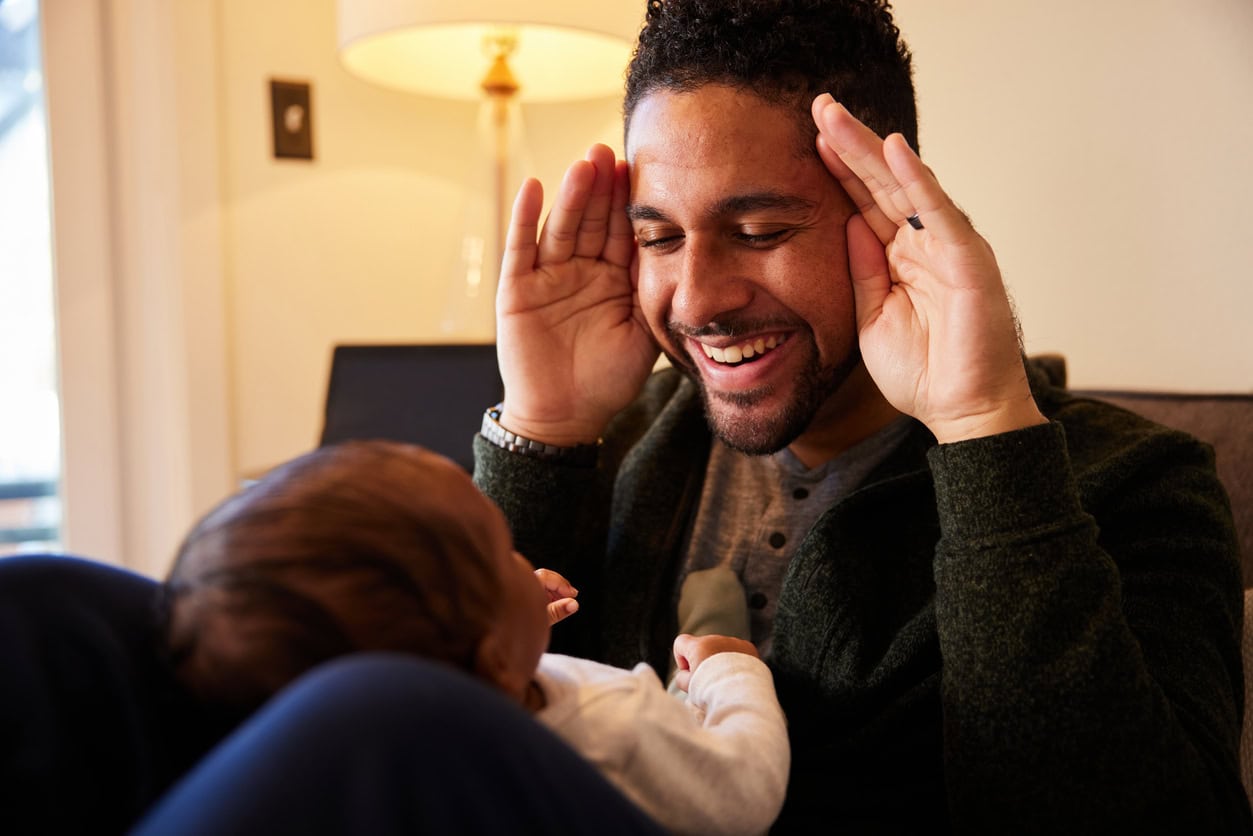Witnessing your baby learn new skills is one of the most bittersweet parts of parenthood. It’s so exciting to watch their brains and bodies achieve developmental milestones, but with each new skill, they seem to leave a bit more babyhood behind! Many of the new skills your baby learns over time (from how they move to how they communicate) are considered developmental milestones. They typically follow a common trajectory and build upon each other. From the newborn stage all the way through age 5 and beyond, monthly milestones continue to develop for your baby.1 Here, we’ll uncover the different types of skills your child should learn, how you can help them, how these milestones are tracked, and what to do if they’re falling behind.
Developmental milestones are skills acquired in infancy and childhood that follow a predictable course and timeline.2 These milestones fall into five categories based on the type of skills a child learns:2
Motor development can be divided into gross motor skills and fine motor skills. Gross motor development refers to large muscle movements, such as rolling, sitting, crawling, and walking.2 Older children practice gross motor skills without thinking (just by walking and moving throughout their day). But babies and toddlers often need encouragement to practice these new skills. Activities like tummy time, placing toys so baby has to crawl to them, and encouraging games like “Simon Says,” tag, throwing a ball, and climbing at a playground help build these gross motor skills.3
While gross motor skills involve full body movements and large muscle groups, fine motor skills are smaller and more precise.2 They typically involve muscle groups in the fingers, lips, and tongue.3 Fine motor skills consist of things like hand motions and activities of daily living, like feeding oneself, writing, and fastening a button.2 To practice fine motor skills, allow your child to turn the pages of a book, stack blocks or cups, do finger painting, color using crayons, and feed themselves using their pincer grasp or utensils.3
Language and speech milestones are another important component of child development. In their first three years of life, babies and toddlers learn to interpret communication and express themselves through speech and nonverbal cues.2,4 From recognizing your voice to crying and cooing as a baby to following directions, forming sentences, and learning grammar, language development builds upon itself.4

Cognitive milestones refer to thinking, logic, memory, reasoning, and problem-solving.2,5 Examples of cognitive milestones include understanding object permanence and causation, developing an imagination, having fears and wishing, reading, and understanding numbers or counting.5
Social-emotional milestones develop the skills of attachment, self-regulation, and interpersonal interaction. Milestones in this category include social smiling, understanding stranger danger, having voice and face recognition, showing empathy, engaging in pretend play, and developing friendships. Spending time in the company of others and fostering close relationships can be helpful for this milestone.2
Developmental milestones build upon one another, so mastering one milestone is essential to learning the next.2 Confirming that children are meeting these checkpoints in development ensures they don’t fall further behind as peers continue to build on their skills. For instance, a child must learn how to walk before learning to run. If they don’t get help with walking, they can’t “catch up” and meet the next milestone.
Studying trends and establishing milestone norms can help identify when children are falling behind. Catching developmental delays early can encourage parents to seek early interventions, such as physical, occupational, and speech therapy. These therapies can bridge the gap and help children catch up to their peers, continue building on their skills, and not fall further behind.2
Your child’s pediatrician should assess their development at their routine pediatric visits. Using standardized and validated tools and trackers, the provider will look for milestone achievement depending on your child’s age.2 Some examples of tools your pediatrician may use include the Denver Developmental Screening Test (DDST) and the Ages & Stages Questionnaires (ASQ).6,7 If your child attends school or daycare, these institutions may also track milestones. When my first daughter attended a daycare center as a baby, they used the ASQ twice per school year and shared her results with me.

The Centers for Disease Control and Prevention (CDC) also publishes a milestone checklist and booklet to help parents be aware of when their children should reach each milestone. These resources go over baby milestones by month in depth.1
If your child’s developmental screening flags certain milestone delays, this doesn’t necessarily mean they’ll be diagnosed with a condition. Tools such as the DDST and the ASQ are screens designed to catch possible delays early. If a delay is suspected, your child can be referred for further examination, testing, and intervention. More specialized experts will be able to assess them for specific issues and help your child make progress.2
Most of the time, you can trust your gut to tell you when something isn’t right with your little one. You know your child best! But to keep your baby on track with their developmental milestones or to help them catch up, there are a few things you can do:
It’s always a good idea to have an impartial and experienced set of eyes examine your baby. Your pediatrician should have a good general understanding of where a child should be at each age and will assess for monthly milestones. Staying on top of your baby’s physical exams and appointments will better ensure that no red flags get missed or overlooked.
While your pediatrician should catch any major milestone delays, parents are the ones who spend the most time with their children. You should educate yourself on upcoming milestones and recognize whether your child is meeting them. You can also provide some age-appropriate toys to help them meet milestones on time. For instance, consider an object permanence toy for a 6-month-old or a push walker for a 12-month-old.5
Never hesitate to reach out to your provider if you notice that your child seems to be falling behind in meeting milestones. They should be happy to see you for an extra visit and assess whether your concern is worth investigating further. You’ll either get extra reassurance or some helpful interventions!
If you’re working with your child on reaching certain milestones, celebrate and encourage them when they make progress. For instance, if your baby points at a book to indicate they want it, say, “I see that you want the book! Here you go!” This helps develop communication and motivation in your little one.2
Get involved with your baby, who should recognize your face and voice in the first few months of life! Continued face time with you will foster their social-emotional development.2 Play with them, talk to them, and involve them in activities you’re doing. Allow lots of floor time to encourage gross motor strengthening. All this interaction and play will foster motor, language, and cognitive development.2
Parents battling depression or substance abuse and those with low education and poor community support may struggle to form a secure attachment with their baby. If your own needs aren’t being met, it will be hard to prioritize meeting your child’s developmental needs. This is why it’s important to take care of yourself and use the support services that are available to you.2
It can feel scary to address any potential delays; it’s as if you’re acknowledging that something might be wrong with your child. It can be easier to remain in denial than admit they might need extra help. However, studies show that early intervention for delayed milestones improves outcomes for that child. Early intervention also involves the child’s whole family in their developmental progress.2
For instance, my daughter had to attend physical therapy because she was struggling to sit unsupported or crawl at 9 months of age. Physical therapy was a fun activity to do together, and I got to learn just as much as my daughter about how to help her continue her progress at home.
While it’s true that each child is on their own timeline, monthly milestones are an important metric in ensuring your baby continues to grow, learn, and thrive. The purpose of milestones isn’t to play the comparison game, but they can be intimidating if you feel like your child isn’t “measuring up.” Think of them in a positive light — the goal is to catch potential issues early and prevent them from becoming major concerns. With close attention and early intervention as needed, your child will be on their way to reaching all their developmental milestones!
